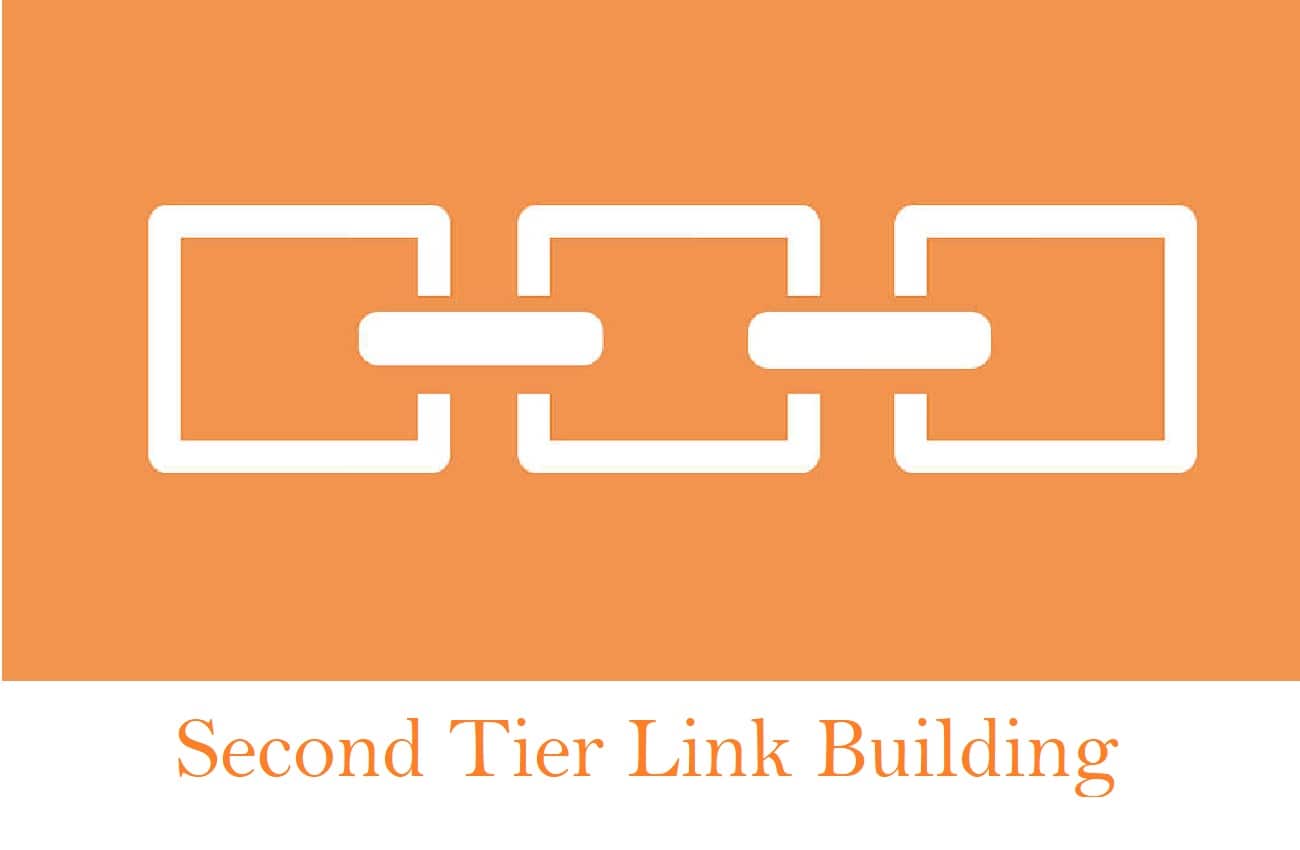Link building is a very powerful thing, and every SEO expert knows its value. It is a well-known fact that you can increase your SEO and domain authority by adding links to your website, approaching other sites to add links to your website, and creating high-quality content. However, do you think this is all that can be done? Did you ever hear of second-tier link building?
You have done all the necessary things to create high-quality content, image optimization, and build backlinks. Now think about what is left to do? You don’t have to wonder anymore because we will tell you about a secret strategy that very few webmasters use: second-tier link building.
What is second-tier link building?
Before knowing second-tier link building, you should know what first-tier link building is. A basic backlink is known as a first-tier link, and it directly links with your website from any other website; its power cannot be underestimated. For your content, a high-authority website serves as an advocate in Google’s eye whenever it is linked with your site. But, here comes a confusing thing about second-tier linking, it links from any website to the content that links with your website instead of directly linking from external content. Why is it so?
Let me explain it to you. Guest blogging is the only strategy around which the second-tier links revolve. Now, the question arises of how it works. Here is the answer:
You write a blog post relevant to the niche of your website for the publication. Then, you will add a backlink in your content or the author’s bio, and this backlink will be added to your website. You will do this because you know very well that what are the benefits of link building are. Once guest posts are done share them on all the social media platforms. And doing this, you will engage in the second-tier linking.
Example of First-tier link building
Let us have an example of a first-tier backlink. The link directly goes to the website of the author; now start with Smart Blogger. Here you will see a link to a website at the bottom of the author bio. When you follow this link, you will automatically reach another website of the same author who wrote the article “Smart Blogger”. And her is when the magic of the second tier will start.
The links that you see on the Facebook posts are a good example of a second-tier link. However, this is just one way of doing second-tier linking. The links given in the posts made of social media take traffic to the guest blog post, which is further linked to Booktrep, got it? Keep in mind that a second-tier link does not take place only on social sites. It can take place on any online property when your guest post is linked to another source of content. Some other ways to do this will also be discussed in the article. Let’s begin by discussing the questions that are at the top of the list. What benefits do second-tier links provide to your SEO strategy, and why it’s important to use them?
Why using second-tier links is beneficial?
Your ranking indeed improves by using second-tier links, and we will explain this in just a second. However, before that, let us look at some different ways in which your website and business can benefit from second-tier links. Generation of traffic is the most important thing that second-tier links can do. When you add a backlink of your website to your guest post, there are chances that the traffic to the guest post will also go to your website by following that backlink. Getting leads and traffic is the most challenging thing for a marketer, which can be easily achieved by using backlinks in guest posts.
We are lucky that second-tier link building is designed to do all that. Your guest blog articles will be prompted by many public through social media channels and email lists. But you can scatter some additional links all over the Internet to generate some additional traffic. You can place these links on different websites, social media, and your website. No matter what the source is, you will benefit from these clicks as the guest blog post. Considering all this, the guest blog post on a publication that uses no-follow links is worthy of your time.
How to find the opportunity?
It is suggested that you promote the publication’s link where you have written the guest blog. If the score of publication is higher than your website, it will be easier. To check your domain score, you can search the URL on Moz or Ahrefs. Multiple factors are taken under consideration to calculate the overall score of a website on these tools. A website is given a score between 1 and 100. The higher the score higher the authority of the website. You can compare your domain score with other websites of your category to determine whether the second tier will be better to generate traffic on your website, and for some websites, they are better.
What is required for a second tier backlink?
Second-tier backlinks only require you to write a guest blog on another website and place your link in your content. According to James Parsons, a sudden rise in traffic can be seen after you start guest blogging. It is the same for any content creator. Look at it to get more and more traffic by putting more and more links to your site out on the Internet. By doing this, you will be creating more opportunities for people to visit your website. You create more paths towards your guest blog post using second-tier links, eventually leading to your website. The second-tier links improve your SEO strategy by increasing the domain authority of your website. You are guest posting on those websites that have high domain authority and are relevant to your content. After that, you link that website with yours, and this is called a chain reaction.
How to build second-tier backlinks?
It’s time to use the strategies that can help in building second-tier links. Determining the number of second-tier links you generate is the first thing you would want to do while working on second-tier links. You can do this through the following steps:
- Enter the guest blog post URL.
- Click on the search button
- After this, some information will pop up, but you should be paying special attention to the “Root Domain” count.
There are 23 root domains for the Smart Blogger piece mentioned earlier, which means that guest blog post has created 23 open doors for people to reach Booktrep. It is a lot of traffic.
Ways that can be used for second-tier link building
1. Social media sharing
Social media sharing is the easiest method used to build second tier links. You can ask your friends to share the guest post with others on social media so that you will get more traffic by engaging prospects. The people following you won’t feel invasive, and you won’t be using direct links to your website. Once someone has clicked the link, it is a sure thing that they will check out your website along with the article too. It improves your domain authority. However, to take full advantage of your social media channels, you should know the best time to post.
2. Public relations
Many blogs and websites are willing to link and share the article for a high domain authority website within your industry. Tools like Ahrefs, SEMRush, Ubersuggest, MOZ can be used to find places that are willing for second-tier link building for you. There are two options that you can use. Search for your industry and search for the article topic you wrote. After finding websites, pitch them. It works the best for all outreach types. Second-tier links have a direct link with traffic on your website; the more the links the more the traffic.
3. Linking your website to the guest post
Linking the guest post to your website is another second-tier strategy that you should never forget. It will increase your guest post ranking and which in return will generate more traffic on your website. And it will happen because more people will see your guest post if it has a good ranking on Google, and the possibility of them clicking on the link to your website will increase. The links do not have to be super creative simple links will work great too. All these perks make this strategy too simple to ignore
4. Guest blog post
Guest blog posting is the best strategy for second-tier link building. The more you guest blog post, the more is the traffic on your site with links. You have to link each guest blog post with other guest blog posts and then to your website. When you publish a new guest blog post, the first thing to do is sharing it on your social media. After that, ask for some links on another website with high domain authority, and then the last step is linking them with your website.
But, here comes a problem, second-tier link-building strategies take a lot of time. The most time-consuming thing is writing a guest blog post for different publications. So, if you do not have time to write guest blog posts for your website, you can hire someone to do this task, pay him, and get your work done in few days. Yes, it is true that the more you write, the better is the SEO, the more will be traffic generated on your website, but there is no need to write a guest blog post daily.
You can write two guest blog posts per month and then link them to other guest blog posts. Hence second-tier link strategy will build which will link directly to your site. Then, after some months, there will be a huge amount of first and second tier backlinks. As guest blogging will increase, traffic will also increase. never create SEO competition that is not necessary for your website.
Conclusion
In today’s market, most people are paying attention to first-tier links, and most of the websites are not using second-tier links building to benefit the most from the first tier links. The biggest reason for second-tier links to work so effectively is that they use the already created links. Therefore, we can say that second-tier links generate traffic to your first-tier links, finally generating traffic to your website. After learning all the benefits and working of the second-tier back links, you can now make a strategy designed to benefit your website.



The Overlooked SEO Power of Social Media Backlinks
What Is Link Bait? A Complete Guide with Examples and Ideas